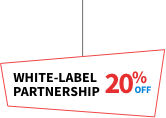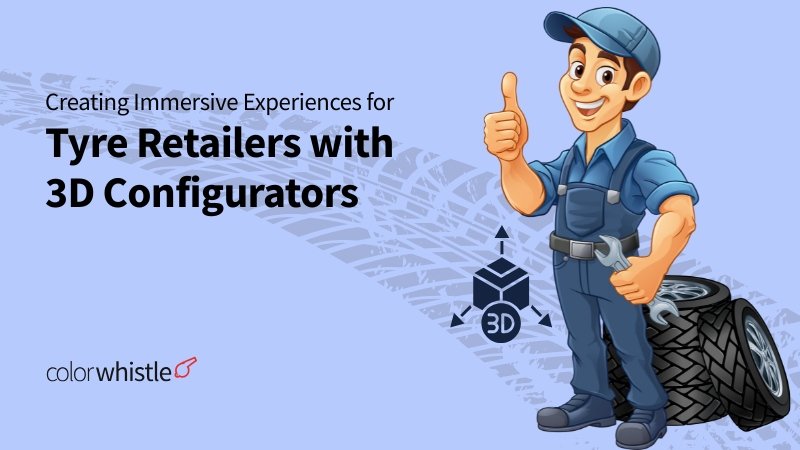What is 3D GIS and How Does it Work?
Custom 3D GIS tools are specialized geographic information system solutions designed to help businesses visualize, analyze, and manage spatial data in three dimensions. These tools enable companies to put their operations “on the map” by creating detailed, interactive 3D models of landscapes, infrastructure, and urban environments that integrate multiple layers of geographic information.
Importance of Business Mapping
Business mapping is crucial for organizations as it aids in visualizing complex spatial relationships intuitively. This visualization helps in making informed strategic planning and operational decisions based on precise geographic context.
Overview of Geographic Information Systems
A Geographic Information System (GIS) combines hardware, software, and spatial databases to capture, store, analyze, manage, and present geographic data. Custom 3D GIS tools extend these capabilities into three dimensions, offering a more immersive and detailed perspective.
Benefits of Spatial Data Visualization
Enhanced Decision-Making: Visualizing spatial data in 3D allows for better understanding and analysis of geospatial relationships.
Operational Efficiency: Businesses can optimize logistics, asset management, and urban planning by leveraging 3D GIS tools.
Actionable Insights: Interactive 3D models provide comprehensive insights that improve business intelligence and market analysis efforts.
By integrating these advanced capabilities, custom 3D GIS tools offer significant advantages for various industries looking to harness the power of spatial data visualization.
Also Read
Applications of 3D GIS in Business and Logistics
Role of 3D GIS in Business Intelligence
Custom 3D GIS tools are essential for improving business intelligence. They allow for the visualization and analysis of spatial data, making it easier to understand complex information. With these tools, businesses can create detailed maps and models that highlight patterns and trends that may not be immediately apparent through traditional data analysis methods.
Example
A retail company can utilize 3D GIS to map out customer demographics about store locations. This analysis helps identify the best areas for opening new outlets or planning marketing campaigns.
Importance of Spatial Analysis in Decision-Making
Spatial analysis is critical for making informed decisions across various industries. By using 3D GIS, businesses can conduct intricate analyses that take into account multiple layers of geographic information.
Here are some examples:
Urban Planning: City planners can use 3D GIS to visualize infrastructure projects and assess their impact on surrounding areas.
Environmental Impact: Companies can evaluate environmental risks by analyzing terrain, vegetation, and climate data with the help of 3D GIS.
Healthcare: Health organizations can track disease outbreaks and allocate resources effectively based on spatial data analysis.
The ability to see data in three dimensions enhances our understanding of spatial relationships. This deeper insight ultimately leads to more effective strategies and solutions in decision-making processes.
Optimizing Logistics and Delivery with 3D GIS Tools
How 3D GIS Aids Logistics Optimization
Custom 3D GIS tools are essential for optimizing logistics. They allow businesses to view and analyze spatial data in three dimensions, making it easier to:
Identify the most efficient routes
Streamline operations
Reduce transportation costs
By incorporating real-time data, businesses can adapt their logistics strategies on the fly to accommodate changes like traffic, weather, or road closures.
Importance of Route Planning Using 3D GIS
Effective route planning is crucial for ensuring deliveries are made on time and within budget. With the help of 3D GIS tools, companies can test out different routing options to find the best paths for their vehicles. These simulations take into account factors such as elevation changes, road networks, and potential obstacles, providing a more thorough analysis compared to traditional 2D maps. As a result, businesses can expect:
Reduced fuel consumption
Lower emissions
Improved delivery times
Asset Tracking Benefits with 3D GIS Integration
Integrating 3D GIS tools into asset tracking processes brings significant advantages. Businesses can now keep tabs on their assets in real-time within a three-dimensional environment. This capability allows for better management of mobile resources like vehicles and equipment. The benefits include:
Prevention of losses
Optimization of asset utilization
Enhancement of maintenance scheduling
Enhancing Delivery Efficiency Through 3D GIS Tools
Another major advantage of using custom 3D GIS tools is the ability to enhance delivery efficiency. These tools offer precise mapping and geocoding capabilities, ensuring that delivery locations are always accurate. Furthermore, interactive data overlays provide valuable insights into factors that could impact deliveries, such as population density or local regulations. Armed with this detailed understanding of the delivery landscape, businesses can make informed decisions that lead to:
- Increased overall efficiency
- Smoother operations
Enhancing Sales Strategies with 3D GIS Maps and Interactive Data Overlays
Market analysis and sales optimization take on new depth when leveraging 3D GIS maps combined with interactive data overlays. These technologies enable businesses to visualize not only customer demographics and purchasing trends but also spatial relationships that directly impact revenue growth opportunities.
Utilizing 3D GIS for Market Analysis in Sales Strategies
- Visualize sales territories, identify underserved markets, and recognize patterns invisible in 2D reports.
- Evaluate proximity to distribution centers or retail locations when launching new products or services.
Targeting Customers Effectively Using 3D GIS Maps
- Segment customer bases by geolocation, elevation, or neighborhood characteristics.
- Use heatmaps on logistics 3D maps to pinpoint high-value prospects within urban environments or sprawling regions.
Conducting Competitor Analysis with Custom 3D GIS Tools
- Overlay competitor locations, service zones, or delivery reach onto your own operational map for instant gap analysis.
- Compare competitor density and performance metrics within custom-defined geographies.
Importance of Data Visualization Through Interactive Overlays on Maps
- Combine sales figures, demographic profiles, real-time traffic, and inventory data into one interactive map interface.
- Empower teams with intuitive dashboards for rapid decision-making.
Layered Information for Comprehensive Insights Using Custom 3D GIS Tools
- Enable simultaneous viewing of population density, infrastructure constraints, and sales team coverage areas.
- Drill down from regional overviews to street-level details for targeted action planning.
Putting Your Business on the Map with Custom 3D GIS Tools transforms static data into actionable intelligence, enabling agile responses to shifting market conditions and competitive landscapes.
Implementing Custom Software Solutions for Real Estate and Logistics Firms Using ColorWhistle’s Expertise in ESRI ArcGIS Integration
Integrating ColorWhistle solutions for real estate and logistics firms’ custom software development needs is a strategic move toward optimizing spatial data utilization. By leveraging custom software development tailored to specific business requirements, firms can address unique challenges in their operational workflows. ColorWhistle offers robust solutions that streamline processes, enhance data accuracy, and improve decision-making capabilities.
Also Read
Building Enterprise-Grade Applications Compatible with ESRI ArcGIS Platform
ColorWhistle excels in developing enterprise-grade applications that seamlessly integrate with the ESRI ArcGIS platform. These applications not only harness the powerful geospatial analytics of ArcGIS but also amplify it through customized features designed to meet the unique demands of the real estate and logistics sectors.
Enhanced Capabilities
By aligning with ESRI ArcGIS, these custom solutions provide advanced functionalities such as precise asset tracking, sophisticated route planning, and comprehensive spatial analysis.
Scalability
The enterprise-grade nature of these applications ensures they can scale with your business growth, accommodating increasing data volumes and complex analytical needs.
User-Friendly Interfaces
Tailored interfaces ensure that users can interact intuitively with 3D GIS tools, facilitating a seamless experience in managing and visualizing spatial data.
To further enhance the user experience, ColorWhistle’s expertise in creating customized GIS software can be leveraged. This includes developing AI-powered applications that transform raw geographic data into actionable insights, driving strategic success.
Moreover, businesses can also benefit from ColorWhistle’s website redesign services, which focus on improving user experience (UX) while ensuring optimal performance of the website. This holistic approach towards integrating advanced technology with user-friendly design makes ColorWhistle a preferred partner for businesses aiming to optimize their operations.
FAQs (Frequently Asked Questions)
What is 3D GIS and how can custom 3D GIS tools benefit my business?
3D GIS (Geographic Information System) is a technology that enables spatial data visualization in three dimensions, allowing businesses to map, analyze, and interpret geographic information effectively. Custom 3D GIS tools help businesses by providing tailored mapping solutions that enhance business intelligence, improve decision-making, and offer comprehensive spatial analysis.
How does 3D GIS improve logistics optimization and delivery efficiency?
3D GIS aids logistics optimization by enabling precise route planning, real-time asset tracking, and efficient delivery management. By visualizing logistics operations in three dimensions, businesses can optimize routes, monitor assets accurately, reduce delivery times, and enhance overall operational efficiency.
In what ways can 3D GIS maps enhance sales strategies and market analysis?
3D GIS maps support sales strategies by offering interactive data overlays that facilitate market analysis, customer targeting, and competitor analysis. These layered visualizations provide comprehensive insights into market trends and customer behavior, enabling businesses to optimize sales efforts and make informed strategic decisions.
Why is integrating ESRI ArcGIS important for custom software solutions in real estate and logistics?
Integrating ESRI ArcGIS into custom software solutions ensures compatibility with enterprise-grade geographic information systems widely used in real estate and logistics sectors. This integration enhances spatial data capabilities, supports advanced mapping features, and enables firms to leverage robust GIS functionalities for improved operational outcomes.
How do custom 3D GIS tools contribute to effective business mapping and spatial data visualization?
Custom 3D GIS tools tailor spatial data visualization to specific business needs, allowing for detailed mapping of assets, markets, or logistics networks. This customization improves clarity in data representation, facilitates better understanding of spatial relationships, and supports strategic planning through enhanced geographic insights.
What role does spatial analysis play in decision-making using 3D GIS applications?
Spatial analysis using 3D GIS applications allows businesses to examine geographic patterns and relationships within their data. This analytical process supports informed decision-making by identifying trends, optimizing resource allocation, assessing risks, and uncovering opportunities based on spatial contexts relevant to the business environment.





